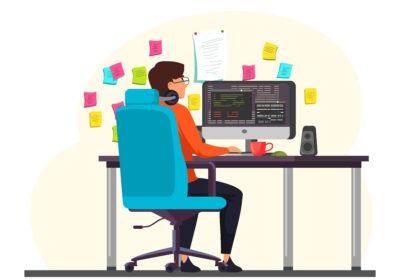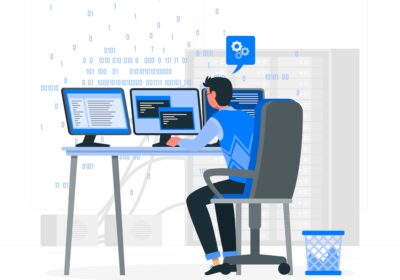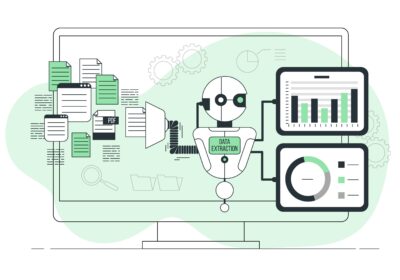In the digital age, the user experience (UX) has become a critical aspect of software development, directly impacting overall software performance and productivity. This is particularly true for Enterprise Resource Planning (ERP) systems, which are complex and multifunctional. A well-designed UX can significantly enhance user engagement, leading to improved performance, motivation, and persistence. This blog post will delve into the technical strategies for streamlining navigation and enhancing user engagement in ERP systems.
Streamlining Navigation in ERP Systems
Streamlining refers to the improvement of the efficiency of a certain process within an organisation. In the context of ERP systems, streamlining can be achieved through various technical strategies:
- Automation: Automation can help reduce expenses, save time, and grow the bottom line. For example, ERP software can automate tasks such as tracking inventory levels across multiple locations, creating sales orders, allocating inventory to each sales order, emailing invoices or notifications to customers, coordinating cross-department workflows, replenishing stock when it gets low, tracking and organising receivables, and sending out notices to shorten receivable cycles and improve cash flow.
- Simplification of Tasks: Simplifying tasks can make ERP systems more user-friendly and efficient. This can be achieved by following a minimalistic approach while developing the UI and UX of different modules.
- Elimination of Unnecessary Steps: By eliminating unnecessary steps in processes, ERP systems can become more streamlined and efficient. This can be done using modern techniques and technology.
Enhancing User Engagement in ERP Systems
User engagement is how valuable users find your product, based on how much they interact or ‘engage’ with your website or service. Here are some strategies to enhance user engagement in ERP systems:
- Personalization: Rapidly increasing data volumes within organizations have made it even more urgent to personalize information and make it available at a moment’s notice. Role-based user interfaces have been developed to meet these individual needs.
- Intelligent Interfaces: When paired with new technologies such as AI and machine learning, the role-based interface also can become intelligent, predicting how you want your personalized interface displayed and automatically adapting what information is shown.
- Voice and Chat UX: Consumer-focused interfaces, such as Siri, Cortana, and Alexa, have accelerated the adoption of voice and chat as an interface in the enterprise arena. This provides vital benefits for professionals like service engineers, who can use their hands when repairing an asset while searching for instructions using their voice.
- Mixed Reality: Another opportunity to leverage these technologies is through mixed reality, which combines augmented reality and virtual reality using devices such as the Microsoft HoloLens.
Use Cases of UX in ERP Systems
ERP systems are extremely complex and multifunctional. Providing good UX for such software is not an easy task to complete. At the same time, ERP’s convenience is vital. The employees and managers whose needs the system serves should have no difficulties in learning how to use it. Here are some use cases of UX in ERP systems:
- Simplicity: Just look at how many processes one ERP system covers. A simple user experience can eliminate that complexity by offering empowering tools that enable users to get to where they need to get to at the exact moment when they want to go there.
- Increasing Performance: By providing a user-friendly ERP UI/UX design, you significantly increase the performance of your business.
- Adding Personalization: ERP is a multifunctional product that will be used simultaneously by different departments of your business.
Benefits of UX in ERP Systems
The importance of UX design in ERP systems cannot be overstated. It’s critical to achieving all the benefits such software offers. Increasing business performance, boosting customer satisfaction, and optimising resources and costs will be possible only if the ERP system works smoothly. Here are some benefits of UX in ERP systems:
- Simplicity: ERP solutions can be complex. A simple user experience can eliminate that complexity by offering empowering tools that enable users to get to where they need to get to at the exact moment when they want to go there.
- Pleasure: In an effort to build highly productive apps, developers cannot forget about the pleasure of using an ERP system. If something is fun and enjoyable, it’s likely to be done.
- Personality: It allows users to add their style and blaze is another critical aspect. Users should have the ability to personalise their experience based on their specific roles and the way they want to see it.
- Empowerment: The best ERP system in the world is irrelevant if the users are faced with a barrier to information consumption. So, the last item on our list is that the ERP UX should deliver proactive, rules-based content that is easily consumable by the end-users.
Takeaway
In conclusion, the integration of User Experience (UX) design in ERP systems is not just a trend, but a necessity in today’s digital age. Streamlining navigation and enhancing user engagement are critical aspects that can significantly improve the efficiency and productivity of ERP systems. However, achieving this requires a deep understanding of both ERP systems and UX design principles.



